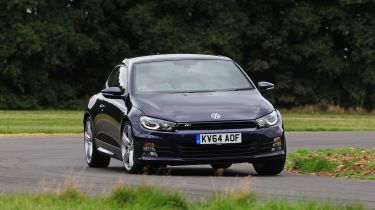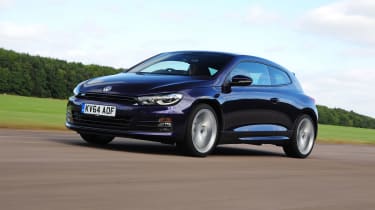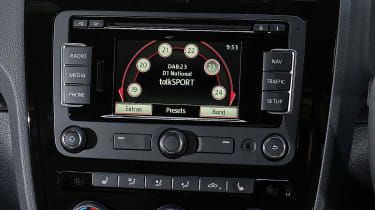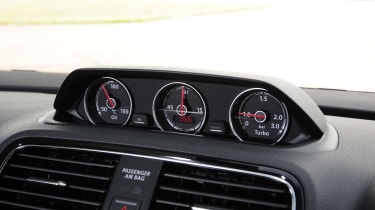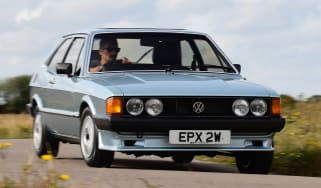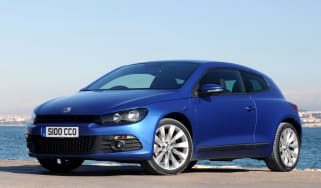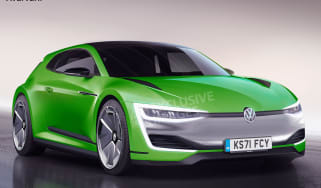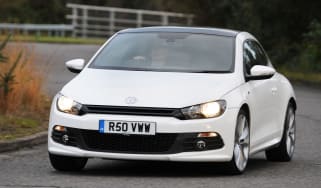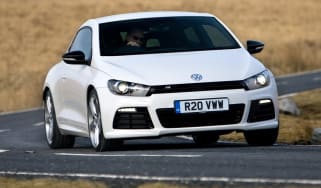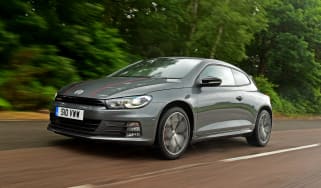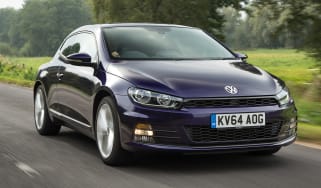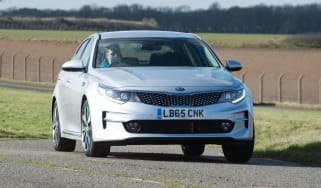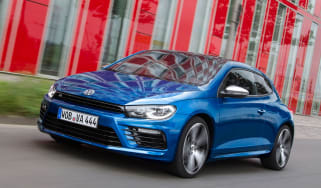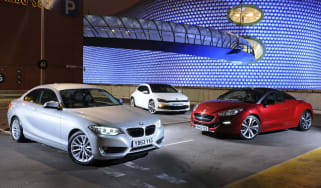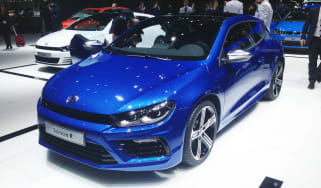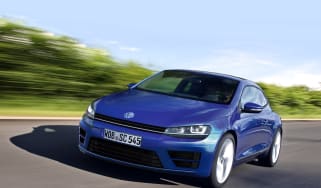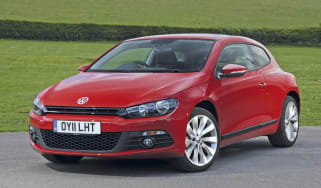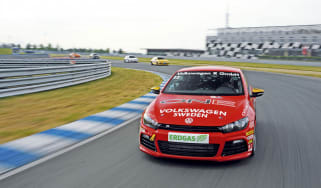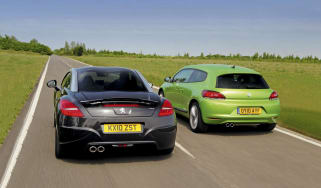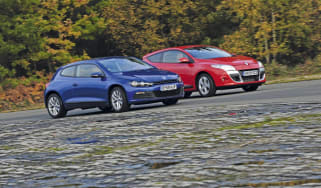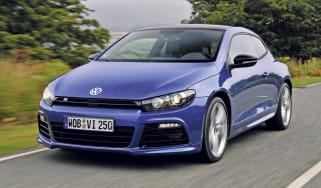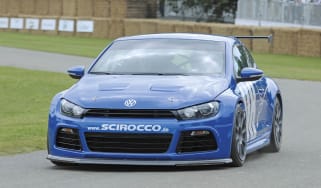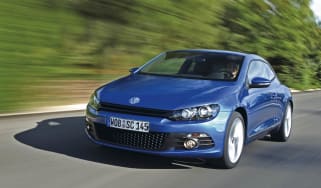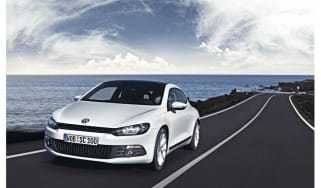Volkswagen Scirocco (2008-2017) review
The VW Scirocco still delivers a strong combination of style, space and ability, but is starting to feel its age

The current Volkswagen Scirocco was launched in 2008. Based on the Golf, it was designed to offer the same quality and composed drive as the GTI, but with a higher level of practicality than most coupes. Along with its dramatic styling, this winning combination continues on sale today.
Yet not all of the Scirocco is ageing gracefully. Its cabin now looks very dated compared to the latest Audi TT and VW Golf, as the Scirocco is based on the dashboard architecture of the old Eos coupé-cabriolet. Despite a recent facelift, the Scirocco is neither as sexy nor as high-quality as the Golf Mk7.
Beyond the fizzy petrol turbo engines, there are some wallet-friendly BlueMotion Technology diesels and a fiery 276bhp R performance model. All versions impress with their usability – unlike most rivals, four usable seats and a decent boot are standard fare in all Sciroccos.
But today, it simply can’t offer the same level of driving finesse as the best coupes or three-door hatchbacks in the class, despite making the Audi TT look more than a little expensive.
The Scirocco name dates back to 1974 and the launch of the Giorgetto Giugiaro-designed original. Like today, it was based on the same platform as the Golf, but the Scirocco arrived before its sibling, with Volkswagen keen to iron out any potential issues before launch the high-volume hatchback.
Used - available now

2024 Land Rover
Discovery
23,308 milesAutomaticDiesel3.0L
Cash £43,500
2023 Land Rover
Discovery
24,925 milesAutomaticPetrol3.0L
Cash £52,450
2019 Volkswagen
Golf
25,904 milesAutomaticDiesel1.6L
Cash £14,900
2018 MINI
3-Door Hatch
50,711 milesManualPetrol1.5L
Cash £8,435The Mk1 lived on until 1981, when it was replaced by the less elegant, in-house designed Mk2, which was both more aerodynamic and more practical. It also turned out to be more successful, living on until 1992. By this time, Volkswagen had launched the more powerful and more upmarket Corrado, with the pair sharing the same showrooms for a few years.
The Scirocco name then lie dormant until 2008 when the all-new Mk5 Golf-based coupe was unveiled at the 2008 Geneva Motor Show. Its styling was influenced by the stunning Iroc concept of 2006, with production confirmed at the AutoEuropa plant in Portugal.
Direct rivals are few and far between, but the most obvious competitors are the Audi TT or three-door Golf GTI. The BMW 2 Series is another coupe vying for attention, along with other sportier alternatives such as the Subaru BRZ and Toyota GT86, which offer rear-drive handling characteristics and a sportier feel, albeit without the Scirocco’s practical packaging.
The sportier coupes tend to lack some of the Scirocco’s range diversity too. There are seven different models, and six engine choices, from the entry level 1.4 petrol to the wild 276bhp Scirocco R with some impressive diesel options in-between.
The entry-level Scirocco is the only model to slip below the £20,000 mark and the price tag is reflective of the relatively basic specification. The Scirocco GT is a far more attractive proposition, adding 18-inch alloy wheels, front and rear parking sensors, Alcantara sports seats, climate control, sat-nav and tinted glass.
The R-Line offers the styling of the full-fat Scirocco R, including 19-inch alloy wheels, sporty side skirts, grille and bumpers, plus leather sports seats. Black Editions of the GT and R-Line models add contrasting black wheels, roof, spoiler and door mirrors for around £500 extra.
The Scirocco GTS comes with a 218bhp petrol engine and sporty features like red brake calipers, red interior stitching details and GTS stripe decals on the bonnet, roof and tailgate, while the range-topping Scirocco R has lowered sports suspension, dynamic chassis control and a unique exterior styling pack.
Under the bonnet, the engine range consists of four petrol options from 123bhp up to 276bhp, and a pair of diesels putting out 148 or 182bhp. All models have four-cylinder turbocharged powertrains, and all are front-wheel-drive with a choice of manual or twin-clutch automated gearboxes.
Engines, performance and drive
The Volkswagen Scirocco is poised on a twisting road, but the latest Audi TT or BMW 2 Series feels far more alive and agile, while a SEAT Leon SC edges ahead for overall composure. It was best-in-class in 2008 but things change at a huge pace nowadays.
The standard adaptive dampers ensure the ride isn’t overly firm if you stick to the comfort setting, but on the optional 19-inch wheels (standard on the R-Line and R) the Scirocco can thump a bit too much over poor surfaces. The fact that the latest-generation Golf handles and rides with more polish also makes the coupe feel a bit dated.
Top-spec R models offer the greatest thrills, with a 276bhp turbocharged engine. However, if you want something a bit easier to live with, pick the GT spec with a TSI engine. It offers a 178bhp 2.0-litre with strong pulling power, if not with the same linear delivery as newer engines. Alternatively, you can have the GT with the punchy 2.0 TDI diesel.
The firm’s Adaptive Chassis Control does pay dividends in the Scirocco, however. Selecting the Sport setting stiffens the dampers, and sharpens throttle and steering responses. The extra weight added to the steering might become tiresome however, so there’s a handy Individual mode where you can mix and match your favourite settings, then save the configuration.
Engines
There are currently four petrol engines (in two capacities) and two diesels in the Scirocco range. A GTS variant with the 217bhp engine from the Golf GTI is the most recent arrival, which plugged a performance gap between the regular range and the rapid R.
The first petrol offered is the 1.4 TSI, delivering 123bhp at 5,000- to 6,000rpm and 200Nm from 1,400- to 4,000rpm. It can only be had with the six-speed manual transmission and while it’s a fine, smooth little unit, it’s really only in the range as a tempting value option; you’re probably better off going for one of the four bigger powerplants.
The remaining engines are all 2.0-litres in capacity, with a six-speed manual as standard or a six-speed DSG automatic as a £1,500 option. Picking the automatic gearbox has no impact on acceleration for the 2.0 TSI and the 2.0 TDIs, but on the R it marginally improves both the car’s acceleration and its economy/emissions.
Performance is brisk on all Sciroccos, as even the 1.4 can do 0-62mph in 9.3 seconds, while at the other end of the scale the DSG-equipped R blasts to 62mph from rest in just 5.5 seconds – and has to be electronically limited to a top speed of 155mph.
The 2.0 TSI petrol engine is our preferred choice for the Scirocco. It delivers 178bhp at 4,200- to 6,200rpm, with 280Nm backing it up from 1,250- to 4,400rpm. This engine balances this decent performance with affordability and reasonable running costs. The 217bhp version is quicker still, but the running costs are a little higher.
The 2.0 TDI diesel comes in either 148bhp or punchier 181bhp guise. Both engines offer maximum brake horsepower between 3,500 and 4,000rpm, but the 181bhp holds onto its peak torque for longer, meaning faster acceleration times. Both engines are strong and smooth, although the 148bhp is going to win more fans as it uses less fuel and emits less CO2.
The R gets its own potent 2.0 petrol but, weirdly, it’s not the same engine as found in the contemporary Golf R, and nor does the Scirocco get the Golf’s four-wheel drive system. It makes do, therefore, with slightly less power and torque, although 276bhp at 6,000rpm and 350Nm from 2,500- to 5,000rpm are still very healthy figures.
MPG, CO2 and Running Costs
VW Group cars fitted with the DSG gearbox are often cleaner than the standard-fit manual option. But with the Scirocco, only the R becomes slightly ‘greener’ as a result of having an automatic gearbox – the manual’s 35.3mpg and 187g/km CO2 improving to 35.8mpg and 185g/km CO2 on the DSG.
Elsewhere, choosing the DSG increases carbon dioxide emissions and possibly road tax requirements too. The 148bhp TDI increases from 109 to 119g/km, while the 181bhp TDI increases from 115 to 125g/km. It increases the 2.0 TSI’s emissions from 142 to 148g/km, while the 1.4 TSI is manual only, so always emits 125g/km.
Claimed average fuel economy is reasonable across the range. Even the 1.4 TSI can return 52.3mpg, while the manual 2.0 TSI achieves 46.3mpg. For the manual TDIs, the 150 hits 67.3mpg and the 184 is not far behind at 64.2mpg. For DSG, the same figures are 44.1mpg (2.0 TSI), 62.8mpg (150 TDI) and 58.9mpg (184 TDI).
Benefit-in-Kind company car rates range from 19 per cent for the 148bhp TDI manual up to 24 per cent for the 181bhp TDI DSG, with the R out on its own at 32 per cent.
Insurance groups
Given its sporty intentions, no Scirocco is in a particularly low group for insurance. The 1.4 TSI is in group 21 in either base or GT specifications, while the 2.0 TSI is in group 30 irrespective of its equipment level.
The TDIs range from groups 26-30: the 150 unit is in group 26, or 27 for the R-Line; and the 184 is in 29 for the GT and 30 for the R-Line. The R itself is in a lofty group 39, with either transmission.
Depreciation
Like any Volkswagen, the Scirocco benefits from the brand’s historically strong reputation to holding on to much of its original value, although it remains to be seen whether the coupe’s desirability with buyers will be affected by the emissions scandal that engulfed the company in late 2015.
Scirocco diesels are expected to retain 50 per cent of their value over three years and 36,000 miles as a diesel, while the price range for petrol version is likely to be 45-49 per cent.
Interior, design and technology
The VW Scirocco was masterminded by the company’s current chief of design, Walter de Silva, and for the facelift the car has been left largely unchanged. That means you get a coupe which is more compact hatchback than sports car, although the wide grille, bulging rear wheelarches and narrowing windows give it a distinctive look.
The updates centre around the lights and bumpers, with LED tail-lamps now standard across the range, while the headlights are new and the front bumper takes styling cues from the latest Golf GTI. Unless you’re a diehard VW fan, you’d be hard pressed to notice big differences but they do enhance the car’s looks. And while it lacks the concept car bravado of the soon-to-be-defunct Peugeot RCZ and the classic proportions of the BMW 2 Series, there’s no doubt it still turns heads.
Sadly, whichever model you choose, the cabin fails to live up to the exterior’s stylish standards, because it’s here where the Scirocco really begins to show its age.
Build quality is solid, but the dashboard – inspired by the Eos coupé-cabrio’s – is old-fashioned compared to the latest in the Golf Mk7, for example. There’s lots of old-generation switchgear, too.
Still, you get decent kit levels, with leather seats (on R-Line and R) and two-zone climate control (all models except the base cars, which get manual air-con), while brushed aluminium inserts around the instruments set the higher-spec versions apart from entry-level Sciroccos.
The facelift ushered in the Mk7 Golf’s fresher multifunction steering wheel with new spoke controls, together with an updated infotainment touchscreen, but the Scirocco still feels like a fundamentally elderly car with some trinkets, which hurts it in a fashion-conscious market.
Those three dials on top of the binnacle show very driver-focused data, in an effort to reinforce the message that the Scirocco is the sports car of the range. So the driver knows the oil temperature and turbo boost pressure at all times, which the centre gauge is actually a stopwatch, so owners can time their laps on track.
Sat-nav, stereo and infotainment
Standard equipment is largely strong. Every Scirocco gets Bluetooth, alloy wheels, DAB radio and an air-conditioned glovebox. Touchscreen sat-nav comes as standard for all models except the base model, where it's a £750 option.
The R now benefits from 19-inch wheels as standard, as does the R-line trim. However, VW forces you to pay extra for niceties such as electric folding door mirrors (£155), keyless entry and go (£365), cruise control (£460), a rear-view camera (£185, not available on the R) and a colour screen between the instrument dials (£205 on Scirocco and GT models, standard on the R-Line and R). Voice control can be added for £185 on all models.
For £460 on all variants, buyers can add the 400W-output Dynaudio Excite sound pack, which adds an eight-channel digital amplifier, digital signal processor, subwoofer and eight speakers to the Scirocco’s cabin. It’s an impressive sound system if you enjoy driving to tunes all the time.
Practicality, comfort and boot space
Unlike most coupes, the Scirocco isn’t just a glorified two-seater. It lets you carry three adult passengers – although the low roofline and shallow windows make things a bit claustrophobic for those in the two sculpted rear seats. Tinted rear glass and dark interior materials don’t help either. You can’t even choose tan leather in some versions to brighten the ambience.
Visibility isn’t great through the Scirocco's fixed rear headrests and letterbox-shaped rear screen, so it’s a good job rear parking sensors are standard.
VW doesn’t quote a towing capacity for any Scirocco, so it’s no good for people who are planning to haul loads, while an 11-metre turning circle is nothing spectacular. You can load up to 75kg onto its roof, though, if you need more practicality than the interior of its squat body can provide.
Dimensions & Size
This is no lithe coupe. Using a hatchback to build off, even the lightest Scirocco (the 1.4 TSI) clocks in at 1,280kg, while the R DSG is a relatively portly 1,450kg. It’s just 1mm longer than a regular Golf three- or five-door, as well as being slightly wider and nearly 50mm lower. The R model is 8mm shorter and lower than the rest of the Scirocco range.
Leg room, head room & passenger space
Front leg room (1,061mm) and space (1,443mm elbow room) is absolutely fine, while the rear is usable for adults but not massively appealing in terms of environment. With 820mm of leg room and 1,272mm elbow room, it’s certainly much bigger in there than the back of rivals such as the Audi TT, Peugeot RCZ or the Toyota/Subaru pairing.
Headroom is reasonably generous too, once again thanks to that link with the Golf, so expect 953mm front and 924mm rear. Opt for a sunroof (£755) and you lose 3mm of head room up front and a solitary millimetre in the rear.
Boot space
The rear seats fold to increase the deep boot’s capacity to a healthy maximum of 1,006 litres. That’s impressive, although with the seats in place the 312-litre area is 78 litres down on a BMW 2 Series.
While the Scirocco’s hatch tailgate is handy, the high load lip makes it tricky to lift in big items. It’s a whole heap better than the Audi TT for passengers or luggage, though.
Reliability and Safety
The Scirocco has only been mildly facelifted, so all of the well-proven mechanical components have been carried over and poor reliability shouldn’t be an issue. But owners have reported problems in our Driver Power 2015 survey, likely due to the car’s age. It just slipped into the top 100 list for new cars.
The company’s network finished 14th out of 27 dealers in our 2017 survey, a big improvement on last time. But it’s still below companies such as Peugeot and SEAT, and the ‘defeat device’ crisis that engulfed VW is unlikely to improve the brand’s reputation in the eyes of customers.
The Scirocco earned a five-star EuroNCAP crash-test rating back in 2009, although the test is far tougher today, so the car would be likely to earn a lower score if it was retested.
Standard safety kit includes six airbags, ABS with brake assist and tyre pressure monitors.
Warranty
Volkswagen’s standard warranty at the moment is three years and 60,000 miles, but for a fee this can be extended on the Scirocco to four years and 75,000 miles (£425, years one and two unlimited mileage, years three and four subject to 75,000 cap), or five years and 90,000 miles (£990, again unlimited mileage to begin with and then introducing the 90,000 cap from years three to five).
This is about industry standard at the moment, although Renault has a longer four-year, 100,000-mile offering on its Megane three-doors.
Servicing
Fixed-price servicing is available on the Scirocco, which covers the car for three years and 30,000 miles. This includes an oil change at 12 months/10,000 miles (whichever is soonest), an interval service including oil change at 24 months/20,000 miles, and a full inspection service with oil and brake fluid changes at 36 months/30,000 miles.
All the parts and labour are guaranteed for two years and the plan is transferrable to another owner if the car is sold during the period.
